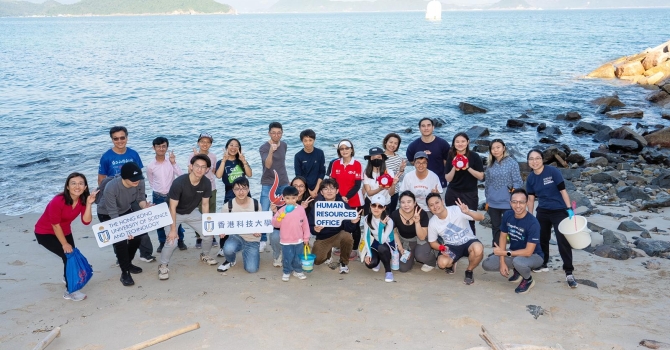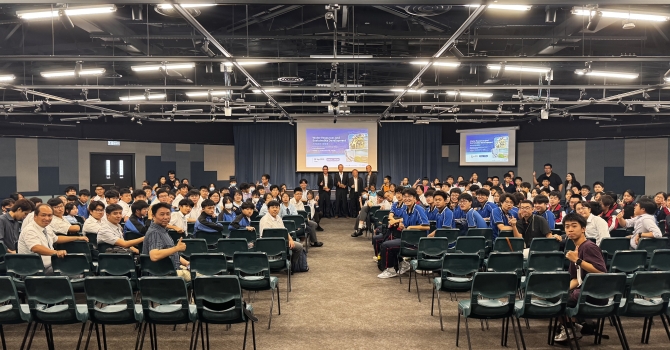From Landfill to Life: HKUST's Tree Transplanting Activity Saves Saplings and Sustains Nature
In a display of unity and environmental stewardship, the Sustainability/Net-Zero Office organized a tree transplanting event on 3 November. With around 70 participants, including students, staff, and faculty members, the event marked a significant milestone in promoting sustainability and conservation efforts within the university community.
The objective was to rescue 40 native saplings from the woodland area where Research Building 2, a proof to HKUST's growth and success, is being constructed.
Understanding the ecological value of these saplings, which would have otherwise ended up in the nearby landfill, the university community took proactive measures to save them. By transplanting these native saplings, including endangered species listed in the IUCN red list, the participants contributed to preserving Hong Kong's unique biodiversity.
The event started with members from the HKUST Community Garden demonstrating tool safety, while the university's landscaping contractor shared their expertise on sapling removal.
For many participants, it was their first time exploring a forest, experiencing its serenity and getting their hands in the soil. Along the way, new friendships were formed, and a shared passion for the environment united the participants.
Following the removal, the group walked to the Chinese Garden near senior staff quarter to transplant the rescued saplings using the Miyawaki method, renowned for ecological restoration and afforestation. This method ensures dense planting of various native species in a small area, maximizing ecological value and aesthetic appeal. As a symbolic gesture, each participant signed their name for the saplings. These names will be carved on a notice board at the planting site, serving as a lasting testament to their commitment to environmental sustainability.
Reflecting on the event's significance, PhD student Shabnam Taghipour shared, "I planted a tree whose shade I may never sit in. But this was my liability for the next generation."
This sentiment resonated with many participants, including student Telia Mak, "The highlight for me is getting to know the passionate members who participated in the event; for example, my partner is also very interested in birdwatching and conservation," she added.
Staff member Vivian Chan also appreciated the collaborative effort and emphasized the joy of connecting with nature. "With the collaborative effort of 70+ staff and students, we saved the baby trees from the landfill and found a beautiful place for them to grow and thrive. Shoutout to Louis, the biodiversity leader, and my teammate, Lily. We will definitely visit our baby tree soon!"
By rescuing and transplanting these precious saplings, the university community has demonstrated their dedication to preserving Hong Kong's natural heritage for future generations. If you are looking for similar activities, please stay tuned for emails from green@ust.hk!


